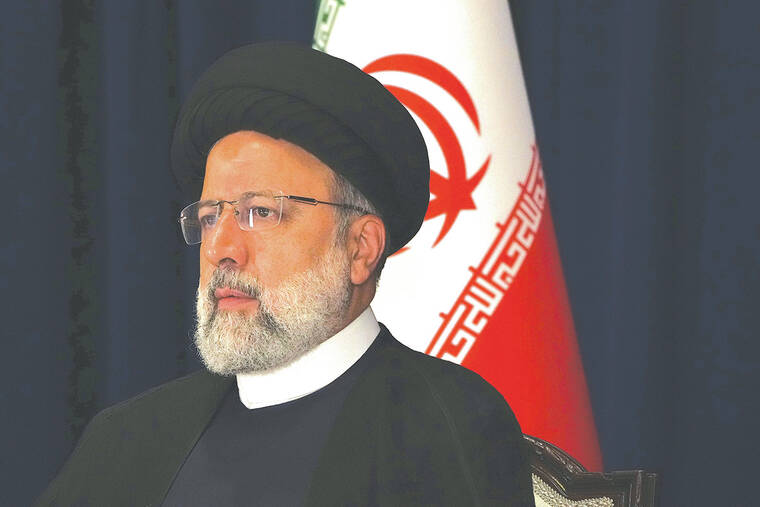No survivors after Iranian president’s helicopter crashes
President Ebrahim Raisi of Iran was killed along with the country’s foreign minister in a helicopter crash on Sunday in the country’s mountainous northwest, state news media reported Monday, leaving the country without two of its most influential figures at a time of heightened foreign tensions and domestic discontent.
The death of Raisi, a conservative who violently crushed dissent and was widely viewed as a possible successor to Iran’s supreme leader, Ayatollah Ali Khamenei, comes during a particularly tumultuous period for Iran. During Raisi’s tenure the country had been roiled by protests and economic upheaval and engaged in a long shadow war with Israel, which burst into the open in an exchange of direct strikes last month.
Raisi, 63, and Foreign Minister Hossein Amirabdollahian were traveling from Iran’s border with Azerbaijan after inaugurating a joint dam project at the time of the crash in a rugged, mountainous area near the city of Jolfa. Search and rescue teams scoured an area of mountains and dense forest through rain and fog. Authorities called off the aerial search at one point because of the weather, dispatching elite commandos of the Revolutionary Guard and others on foot.
Even before the crash site was located, Khamenei vowed in an address on state television that there would be “no disruption” to the country’s operations. “Senior officials are doing their work and I have advised them on the necessary points and all of the country’s operation will carry on smoothly and orderly,” he said.
Raisi had been viewed as one of the front-runners to succeed Khamenei as supreme leader. Now, his death paves the way for Khamenei’s son Mojtaba to assume that role.
Here’s what to know:
— Raisi, a hard-line religious cleric who came of age during the country’s Islamic Revolution, was the second most powerful individual in Iran’s political structure after Khamenei.
— Following his ascent to the presidency in 2021, Raisi consolidated power and marginalized reformists. He continued to expand Iran’s regional influence, backing proxies across the Middle East that have conducted strikes against Israel and the United States, and oversaw a deadly crackdown on domestic protesters, many of them women and young people.
— Iranian law stipulates that if the president dies, power is transferred to the first vice president and an election must be called within six months. The first vice president is Mohammad Mokhber, a conservative politician.
— This is a particularly tumultuous period for Iran. Its long shadow war with Israel burst into the open after Hamas attacked Israel on Oct. 7, setting off the war in the Gaza Strip and a cascade of strikes and counterstrikes across the region. The hostilities became even more pronounced after Israel conducted airstrikes on a building in the Iranian Embassy complex in Syria in April. Iran retaliated with its first direct attack on Israel after decades of enmity, launching more than 300 drones and missiles toward the country, many of which were shot down.
— Domestically, Iran is also facing widespread anger, with many residents calling for an end to clerical rule. Corruption and sanctions have gutted the economy, stoking frustrations. In the past two years, the country has witnessed a domestic uprising, the Iranian currency plunging to a record low, water shortages intensified by climate change and the deadliest terrorist attack since the 1979 founding of the Islamic Republic.
© 2024 The New York Times Company



